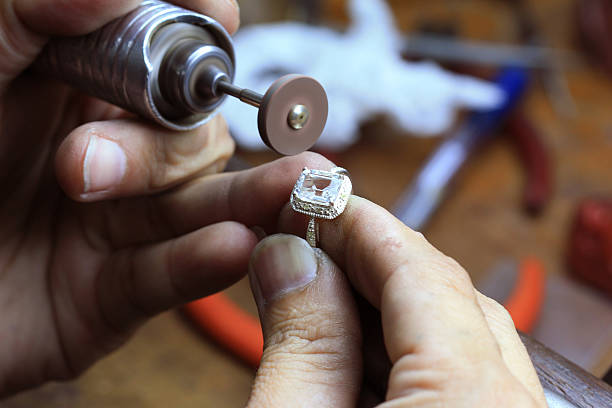Common Diamond Types You’ll Find When Buying a Diamond All Entries

Diamonds differ in cut, clarity, carat, and color. However, there’s more to diamond classification than the 4Cs. Although you need to know gemstone types when buying a diamond, jewelers and customers classify diamonds differently. Classification systems separate diamonds according to their chemical and physical attributes. By analyzing a stone’s atomic components, gemologists can determine attributes about your diamond. You’ll encounter these classifications when buying a diamond.
Diamond Types According To Gemologists
Gemologists consider the stone’s elemental properties during classification. Every diamond may have a carbon base, but atoms from elements such as nitrogen merge with the base as the diamond grows. Although the naked eye may not always notice it, the atoms might cluster, affecting the diamond’s overall color. Here’s how experts classify diamonds.
- Type Ia
It’s the most popular diamond type in the market. Ordinarily, this type emits yellow tones owing to the nitrogen clusters in its crystal lattice. Nitrogen absorbs light from the spectrum’s blue range, resulting in the gemstone’s yellow hue. Type IaA gemstones contain A-aggregate nitrogen pairs, while IaB gems contain B-aggregate nitrogen atoms. You can identify Ia diamonds by their fluorescence and absorbency to ultraviolet light.
- Type Ib
The gemstone’s nitrogen elements occur in singular form instead of clusters. These stones are rarer than Ia gems, forming only 0.1% of the world’s natural diamonds. Most of the market’s fancy-colored diamonds are type Ib. By absorbing blue and green light, type Ib diamonds display a deeper shade of the stone’s color.
- Type IIa
Unlike type I diamonds, these gemstones are free of nitrogen impurities. They’re also harder than type I gems. These diamonds are often called Golconda, after some of the earliest Indian mines to supply the gemstone. Thanks to their compounded elements, type IIa diamonds rarely have internal imperfections, making them a favorite among collectors. Typically, this category’s D-grade white stones are whiter than most D-grade diamonds. Some people even unofficially call them super C and D-grade diamonds.
- Type IIb
These stones are rare, accounting for only 0.1% of the world’s diamonds. They have boron that absorbs light at their spectrum’s red edge to give them a blue and gray appearance. The boron impurities also explain the stone’s electrical conductivity, which doesn’t usually occur in a diamond’s covalent bonds. You might also notice red and blue luminescence in type IIb diamonds. Fancy-colored diamonds in this category come in bold orange, red, brown, and purple hues.
Diamond Types According To Customers
Customers aren’t keen on technical terms when buying a diamond. Here are diamond types according to consumers:
- Natural Diamonds
They account for most white diamonds in the retail market. They’re mined from the earth on which they form. Note that natural diamonds can only be type I or II, not a combination of both.
- Treated Diamonds
Although they’re mined like regular gems, treated diamonds undergo enhancement procedures to increase their value. Common enhancement methods include color treatment, laser drilling, and inclusion filling.
- Lab-Grown Diamonds
They’re man-made gemstones created in the laboratory. However, this doesn’t mean they’re fake. The lab’s chemical conditions are similar to the ones on the ground. Lab-grown diamonds come in different sizes and colors and are cheaper than natural alternatives.
- Fancy-Colored Diamonds
Yellow, green, black...these diamonds come in every imaginable color. The rarest hues in this category include red, blue, orange, and pink. The gemstone might even have several colors. These gems can either be natural, treated, or lab-grown.
Buying a Diamond Safely
Don’t let the technical information discourage you from buying a diamond. However, perform due diligence before making a purchase. To get help from Ralph Mueller & Associates, contact us today.